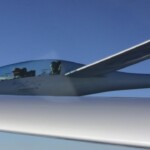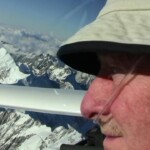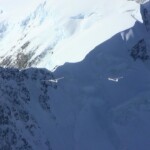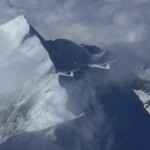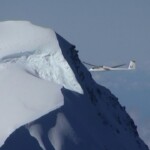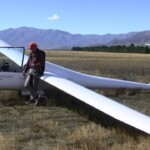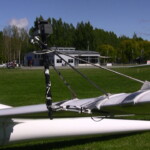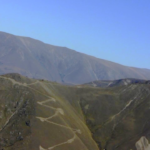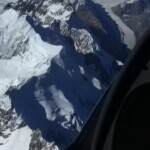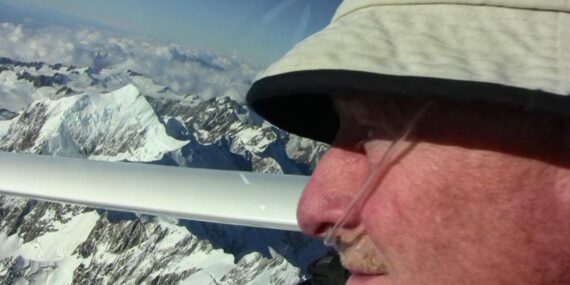 A recent issue of Soaring Magazine has an article by Roger Thieman who tells of his soaring experience at the world renown Omarama soaring site. Sadly, he mentions that Glide Omarma, the commercial operation there, has closed and the gliders and related equipment has been sold. Glide Omarama, managed by Gavin Wills, has been one of the premier soaring locations in the world in recent years. Located adjacent to the Southern Alps of New Zealand, it provides a long season of consistent ridge and mountain wave soaring and was a favorite stop for glider pilots from around the world. The pandemic eliminated most foreign visitors for over two years and virtually stopped all glider operations. Additionally, the New Zealand government levied new regulations on the operation that has had more than it’s share of fatalities over the years. Gavin Wills also was also in dispute with the airport authorities about maintaining his glider operation as the sole commercial operator on the field. Glide Omarama was a bucket list item for many soaring aficionados, and it will be missed.
A recent issue of Soaring Magazine has an article by Roger Thieman who tells of his soaring experience at the world renown Omarama soaring site. Sadly, he mentions that Glide Omarma, the commercial operation there, has closed and the gliders and related equipment has been sold. Glide Omarama, managed by Gavin Wills, has been one of the premier soaring locations in the world in recent years. Located adjacent to the Southern Alps of New Zealand, it provides a long season of consistent ridge and mountain wave soaring and was a favorite stop for glider pilots from around the world. The pandemic eliminated most foreign visitors for over two years and virtually stopped all glider operations. Additionally, the New Zealand government levied new regulations on the operation that has had more than it’s share of fatalities over the years. Gavin Wills also was also in dispute with the airport authorities about maintaining his glider operation as the sole commercial operator on the field. Glide Omarama was a bucket list item for many soaring aficionados, and it will be missed.
I have visited New Zealand several times and have good friends there. On my first trip in 1999 I got a temporary VFR pilots license and toured both islands in a Cessna 182. A few years ago Mercedes and I booked glider flights in Omarama during one trip. The Soaring article reminded me of the visit and it occurred to me the NCSA crew might enjoy the pictures.
Omarama is a small town with a couple of restaurants, a motel and a few hundred people in the south-central part of New Zealand’s south island. It’s located in the foothills of the south end of the mountain range that runs a hundred miles north-northwest and about twenty miles inland from the island’s west coast. Mt. Cook, snowcapped year-round at 12,200 feet, is at the north end of the Southern Alps with the Canterbury Glaciers on its slopes. The prevailing west winds coming off the Tasman Sea provide the lift.
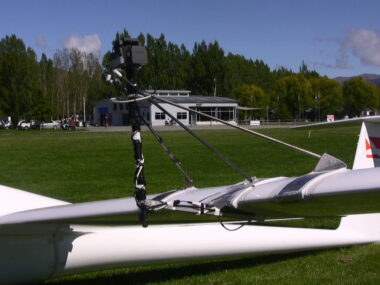 I happened to be booked for a ride there the same day a professional photographer was scheduled to shoot pictures for a coffee-table photography book of New Zealand. Kevin Wills briefed the operation using all three of their Duo-Discus gliders. He had the photographer in the back seat with a remote-controlled camera on a tripod mounted on the wing. If you worry about your Go-Pro disrupting airflow on your glider wing, take a look at the picture of the three-foot tall rig they were carrying! Wills reached Mt. Cook first, even with the camera apparatus on his wing! The second plane was the primary photo object, and we were his back up as number three in case he had issues. My back seat guy, Phil Paine, was a professional instructor who worked in New Zealand (southern hemisphere) for half the year and then move his soaring operations to the the U.S. or Europe (northern hemisphere) in the opposite season. He handled the plane during the trickier operations but was generous in letting me fly under his direction the rest of the time. The best conditions were forecast for mid to late afternoon, so we launched about 2:30.
I happened to be booked for a ride there the same day a professional photographer was scheduled to shoot pictures for a coffee-table photography book of New Zealand. Kevin Wills briefed the operation using all three of their Duo-Discus gliders. He had the photographer in the back seat with a remote-controlled camera on a tripod mounted on the wing. If you worry about your Go-Pro disrupting airflow on your glider wing, take a look at the picture of the three-foot tall rig they were carrying! Wills reached Mt. Cook first, even with the camera apparatus on his wing! The second plane was the primary photo object, and we were his back up as number three in case he had issues. My back seat guy, Phil Paine, was a professional instructor who worked in New Zealand (southern hemisphere) for half the year and then move his soaring operations to the the U.S. or Europe (northern hemisphere) in the opposite season. He handled the plane during the trickier operations but was generous in letting me fly under his direction the rest of the time. The best conditions were forecast for mid to late afternoon, so we launched about 2:30.
Landing Out
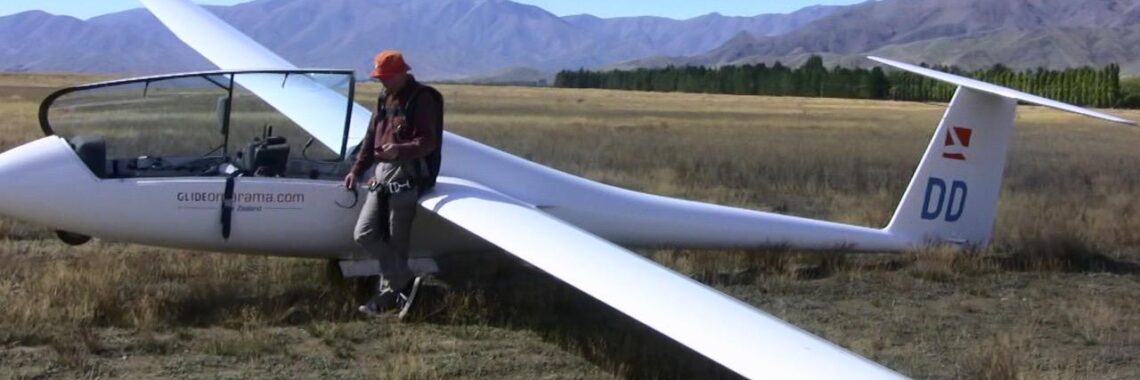
Our first tow didn’t work so well. To get into the wave you have to cross several steep-ridged lower mountains with confined valleys and few land-out options. There was a contest finishing its last day on the Sunday we arrived. One of the contestants lost altitude after scooting over one of the ridges, couldn’t find lift and was trapped in the valley. He made a rough landing in a creek bed, wrecked his glider and broke an ankle. We worked about forty-five minutes with no luck, landed at a farm strip then called the tow pilot to come and give us another tow. The lift improved on the second flight, and we joined the other two gliders over Mt. Cook about an hour later. Once you get into the wave you can fly parallel to the main ridge line on the upwind side and cruise along at an altitude of your choice between ten and twenty thousand feet. The pictures tell the tale but can never do justice to the experience. It was spectacular in the full meaning of the word.
The photographer got my attention when he announced he wanted to take some shots at dusk. We were over Mt. Cook which is at least 60-70 miles from Omarama. None of the professionals seemed concerned, so what do I know? The sun had set when he finished. We climbed to about 15,000 feet and headed for home through spotty, marginal lift. We got home at a good altitude and I logged my one and only night glider landing – pitch dark but surprisingly doable with runway lights for vertical reference. It was a 10 out of 10 day and it’s disappointing to know others won’t be able to experience Glide Omarama for the foreseeable future.
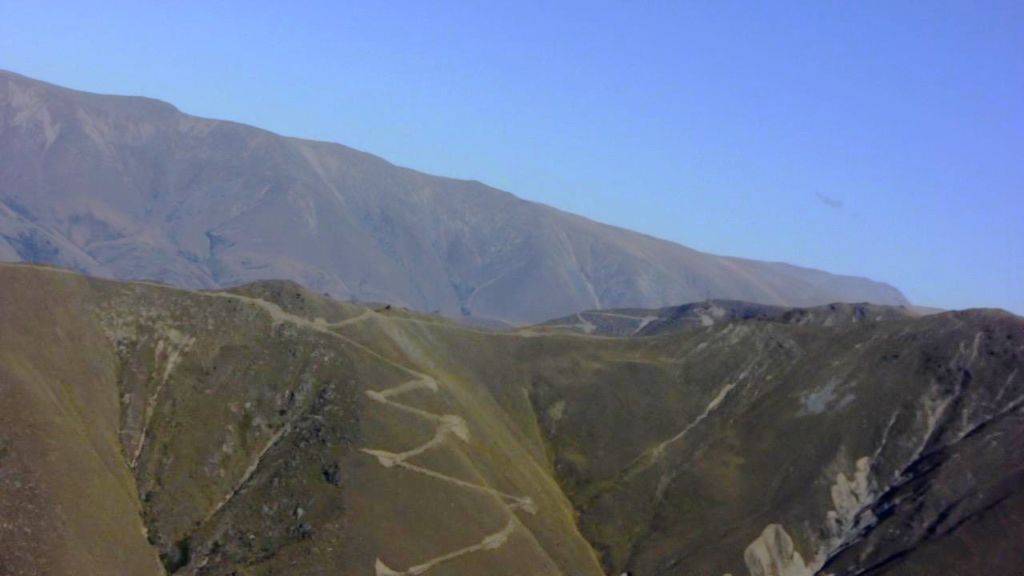 There are similar ag plane strips all over New Zealand, but maybe none this steep. The grassland that supports cattle and sheep is low in phosphorus and ag planes spread fertilizer over much of the rolling pastureland once a year. The zig-zag pattern on the hill is the road for trucks to haul fertilizer to the top of the strip and dump it on a concrete pad. A front-end loader moves it into an open bin in the plane. The plane lands up hill, turns ninety degrees, receives the load, turns another ninety and shoots down the hill. If they are working near the strip the turnaround time can be as little as five minutes. This is the most challenging strip I have seen. It must have a thirty- or thirty-five-degree slope.
There are similar ag plane strips all over New Zealand, but maybe none this steep. The grassland that supports cattle and sheep is low in phosphorus and ag planes spread fertilizer over much of the rolling pastureland once a year. The zig-zag pattern on the hill is the road for trucks to haul fertilizer to the top of the strip and dump it on a concrete pad. A front-end loader moves it into an open bin in the plane. The plane lands up hill, turns ninety degrees, receives the load, turns another ninety and shoots down the hill. If they are working near the strip the turnaround time can be as little as five minutes. This is the most challenging strip I have seen. It must have a thirty- or thirty-five-degree slope.
There are a lot of 300 hp Fletcher-24 ag planes in NZ. They were built in Hamilton on the North Island. The guy that leased me his C-182 on my first trip delivered a Fletcher crop-duster from the Hamilton factory to Ankara, Turkey; 10,000 miles, at best fuel/speed of 100 knots. Must have been quite a journey.
Hope you enjoy the pictures.
Hal Bowman

